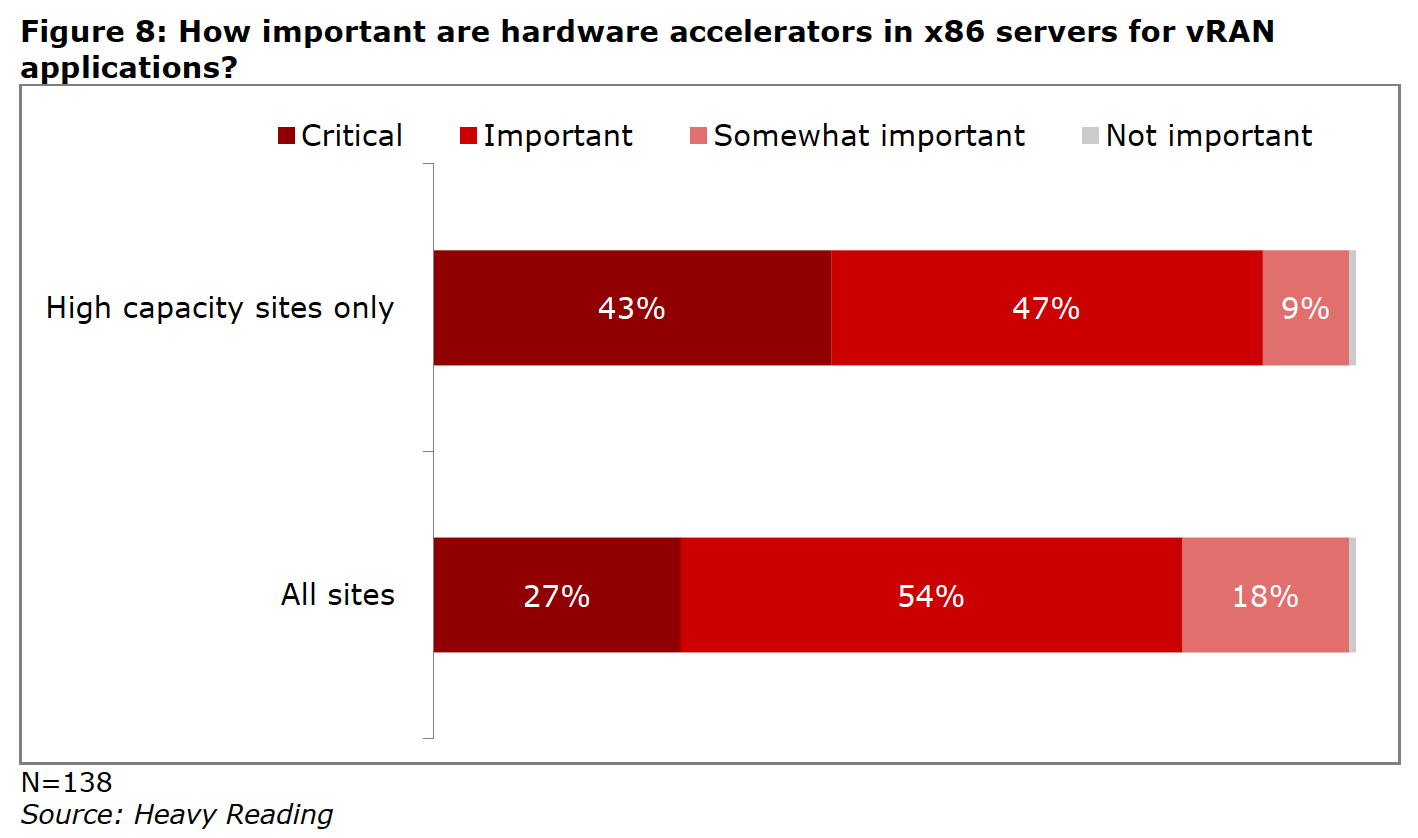The importance of accelerated distributed computing for 5G
The multifaceted needs of a 5G network creates new requirements, like those for AI, IoT, and MEC applications, that legacy technology cannot meet. Due to 5G’s requirement to distribute compute nodes to 10’s of thousands of different sites to support the explosion of new connected devices, there is a fundamental mismatch to legacy virtualisation approaches.
Guest blog written by Jeff Gowan
Virtual RAN (vRAN) based on cloud native, geo-distributed cloud solutions combined with accelerated computing platforms is ideal for solving the modern problems introduced by 5G.
As service providers move to virtualise the RAN they’ve run into an important issue that needs to be solved, which is, how to make it cost effective? Two key issues arise. The first is, in some cases additional hardware is needed to support the distributed cloud software infrastructure. The second has to do with the CPU.
Many CPUs cannot support the Ultra-Reliable Low Latency Connectivity (URLLC) 5G use cases, and the ones that do support them tend to expensive. The combination of these issues multiplied across thousands of edge sites can diminish the OPEX savings that service providers are looking for with virtualisation.
Wind River Cloud Platform is addressing the needs of 5G vRAN by providing a production-grade Kubernetes solution that makes 5G possible by solving the operational problem of deploying and managing distributed edge networks at scale. Where other platforms require 4-6 servers for High Availability (HA) edge solutions, Cloud Platform delivers HA on a few as 2 servers. For more about Cloud Platform and vRAN check out this blog.
On the issue of the CPU, this is where hardware acceleration comes into play. Hardware acceleration offloads certain computing tasks onto specialized hardware components within the system, enabling greater efficiency than is possible in software running on a general-purpose CPU alone. Going back to the example above, accelerators reduce the need for expensive CPUs in order to run edge applications.
This background helps to explain why service providers answered the way they did in a recent survey conducted by research firm, Heavy Reading. Below is an excerpt from the whitepaper based on the survey that discusses operators’ response to the question 'How important are hardware accelerators in x86 servers for vRAN applications?' (Spoiler alert: very important.)
"Hardware accelerators are used to improve Layer 1 performance in vRAN because x86 processors do not currently match dedicated baseband processing hardware. This is particularly acute where higher order multiple input, multiple output (MIMO) and massive MIMO configurations are used (as they increasingly are)...a large majority think hardware accelerators are 'critical' or 'important.'"
Heavy Reading split the question between two categories:
- "High capacity sites,” which process more traffic and users and tend to use carrier aggregation, higher order 4x4 MIMO, 8T8R, and massive MIMO.
- “All sites,” which would include suburban and rural and may be single carrier sites using 2x2 MIMO at the lower end.

Regardless of how you slice the survey results, one thing is clear: 99% of respondents recognize the need for hardware accelerators in order to enable 5G. Hardware acceleration enables virtualisation farther out on the edge. Supporting virtualisation at not only the central unit but also the distributed user plane (layer 2 and layer 1) gives the service provider the ability for more baseband pooling, resulting in better utilisation and flexibility - thus making their network much more efficient by lowering the cost per sector. This is why we’ve been working to implement NVIDIA GPU acceleration technologies such as the NVIDIA EGX Edge AI Platform.
The combination of Wind River Cloud Platform (the commercially supported deployment of StarlingX), which offers extremely low latency and can be deployed on a very small footprint, plus software-defined GPU acceleration built on a cloud- native software stack from NVIDIA makes it possible for service providers to deploy a fully virtualised, 7.2 split virtualised DU that supports Ultra-Reliable Low-Latency Communication (URLLC) in a cost effective way.
While this combination of technology is ideally suited for 5G applications where we’ll see the need for vDUs at a massive scale, the technology also applies in other use cases. As the industrial sector implements Industry 4.0, there will be an increase in the use of sensors including video, audio, and other inputs to better understand what is happening in the physical world. The only way to process all of these inputs will be through effective use of processing at the edge and AI. The combined solution between Wind River and NVIDIA will enable that processing.
As Wind River works with our customers across critical infrastructure sectors such as telecommunications, industrial manufacturing, etc., we are proud to be collaborating with NVIDIA to support the NVIDIA EGX platform.
Courtesy of Wind River.









